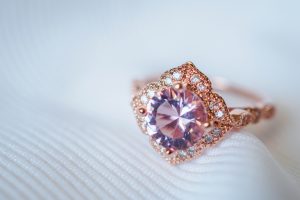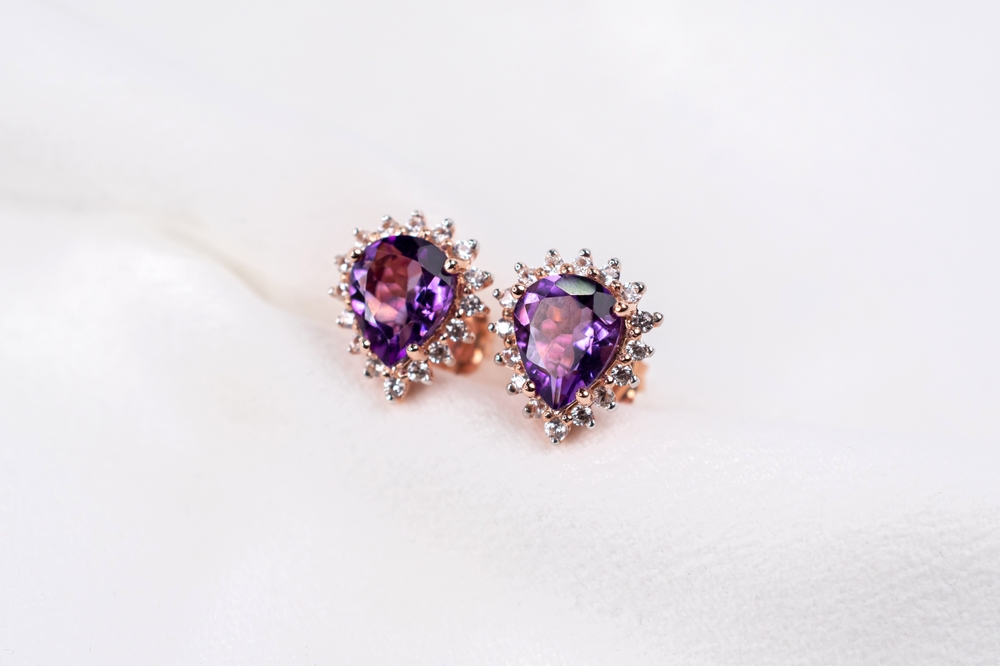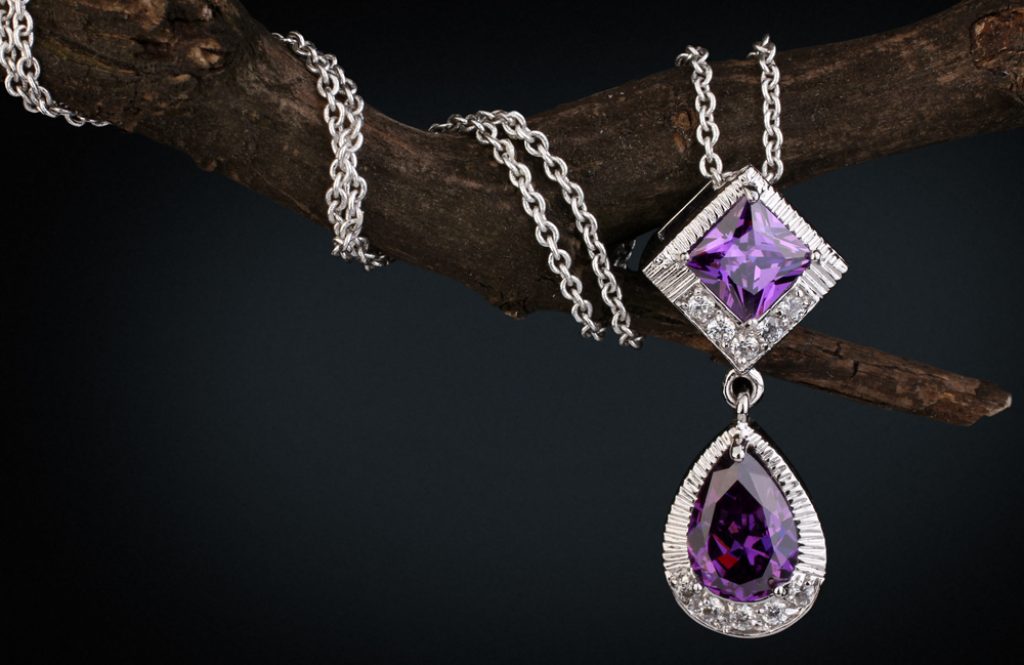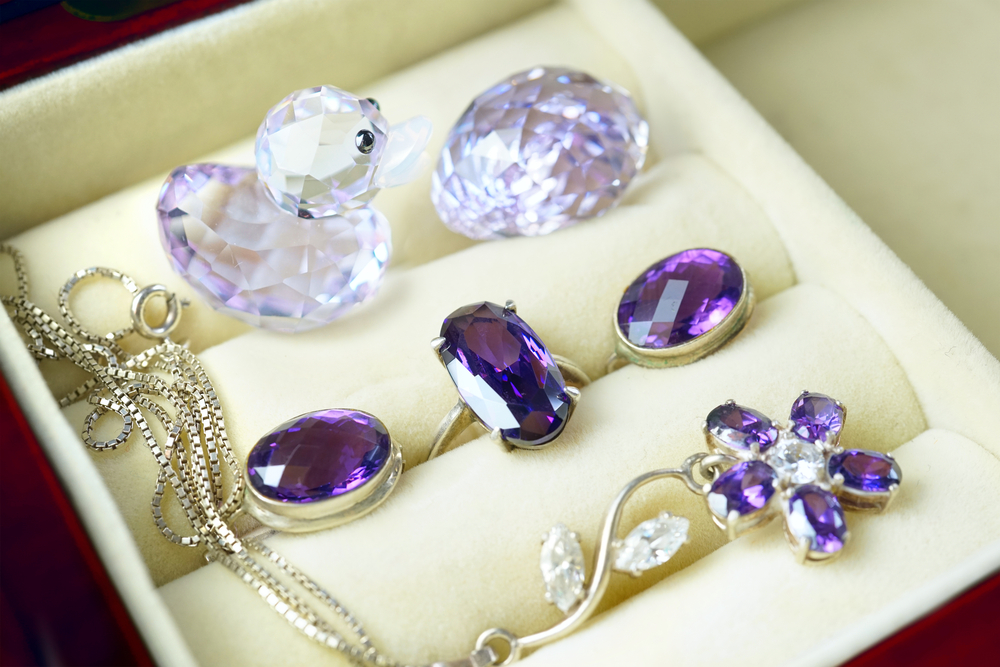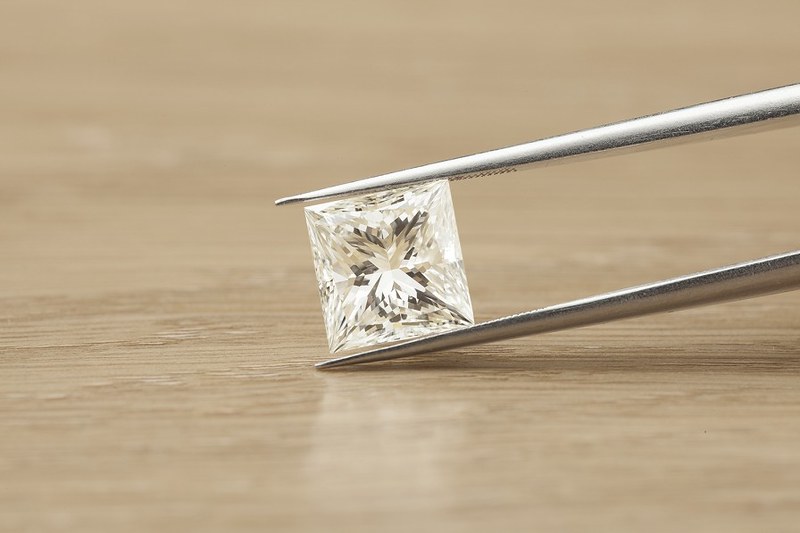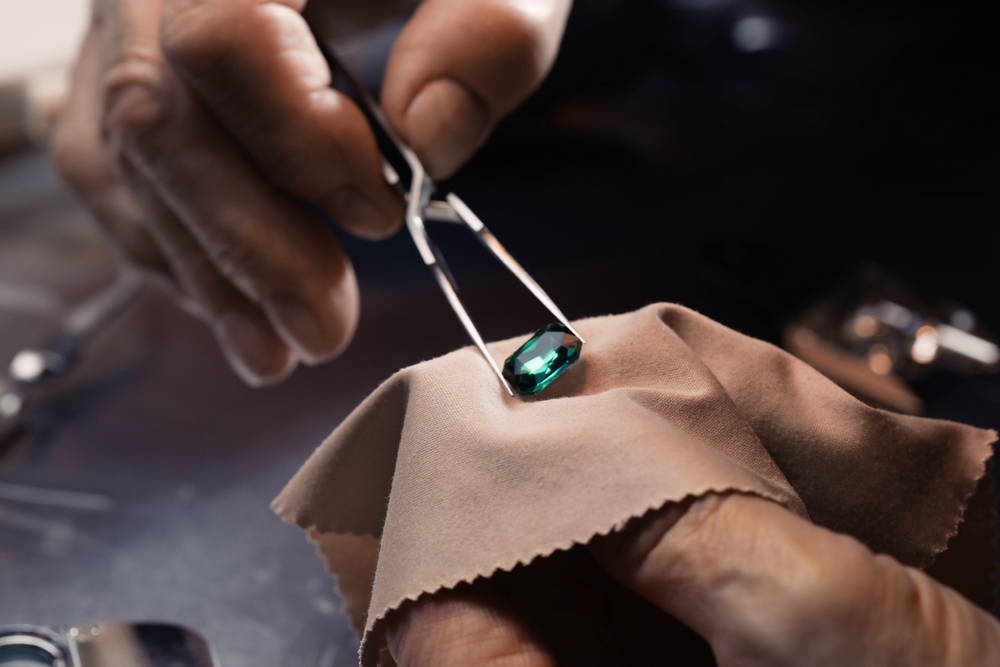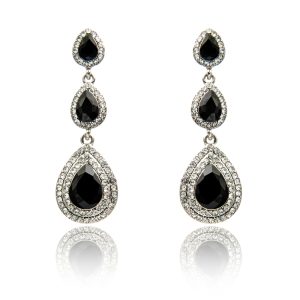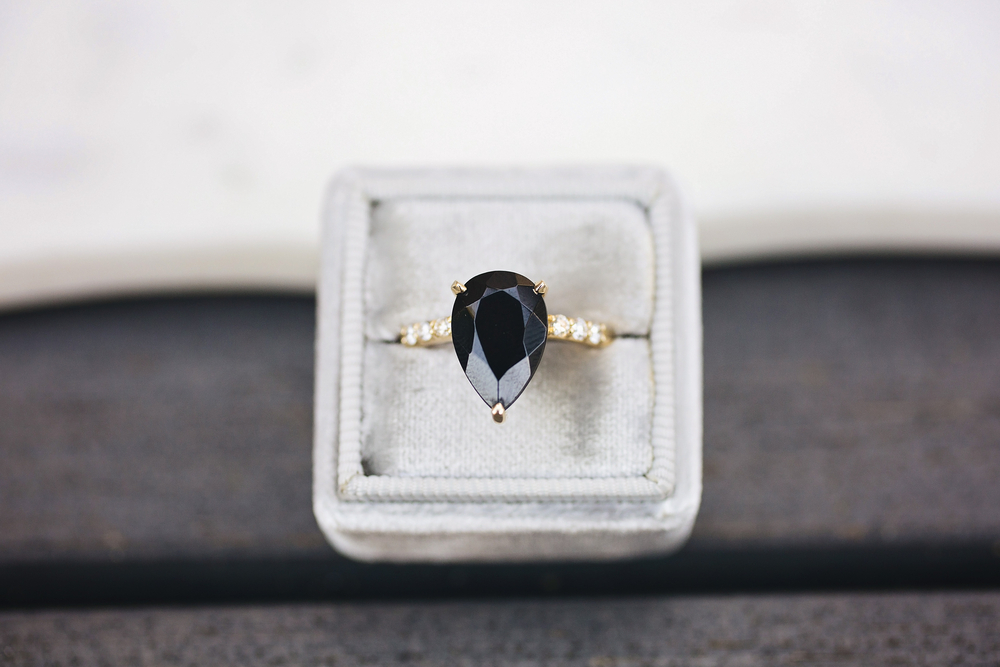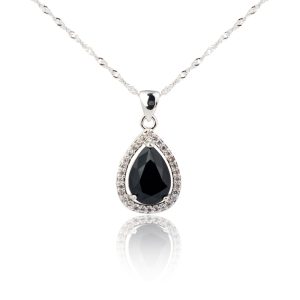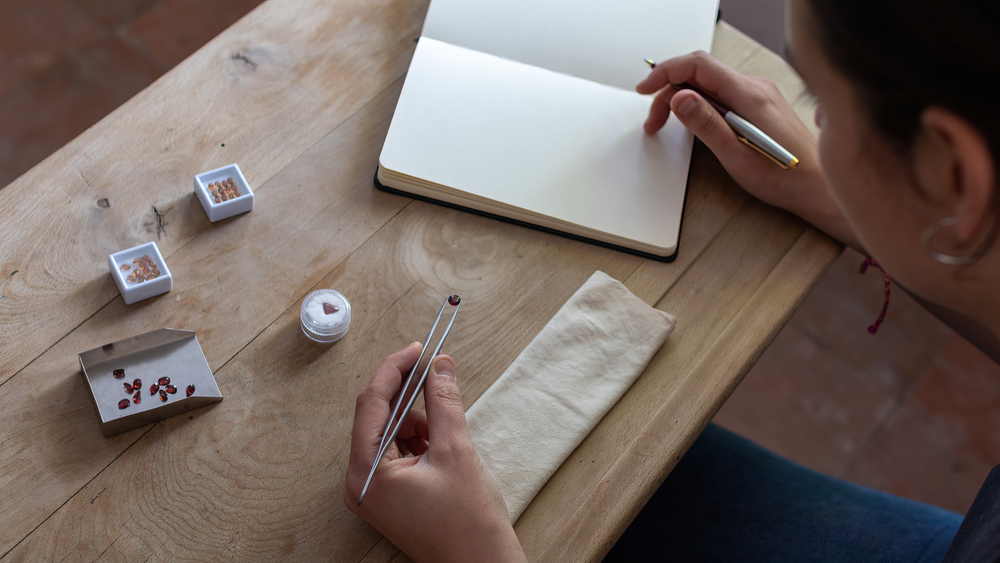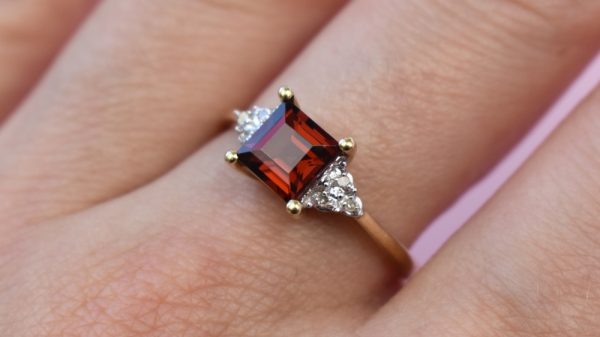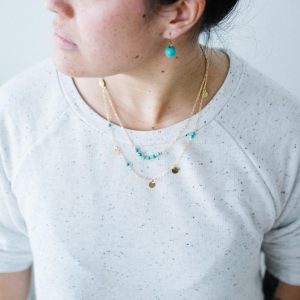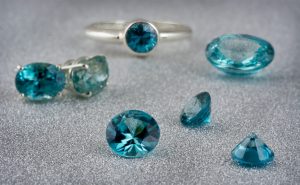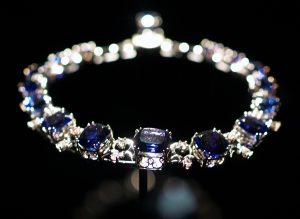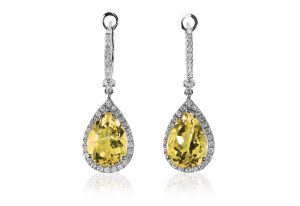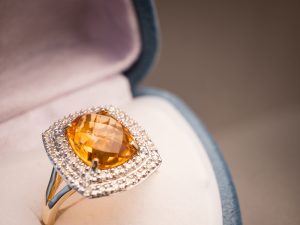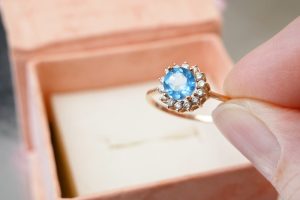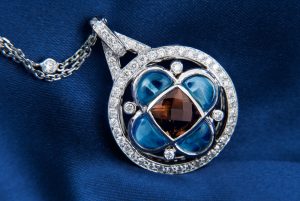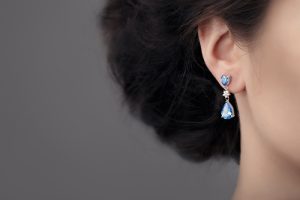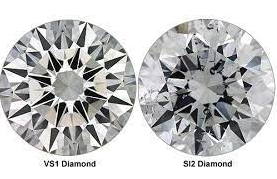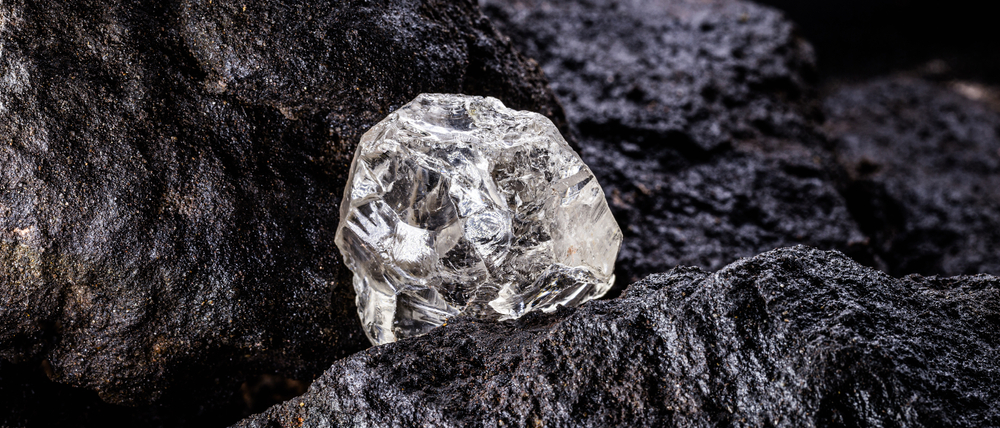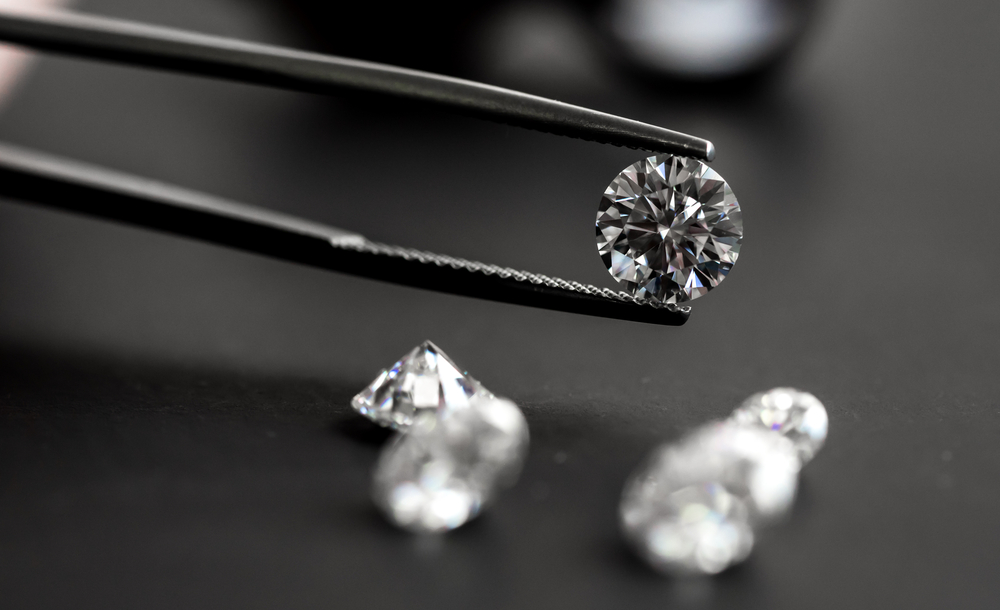An anniversary is a joyous occasion, a time to honor and celebrate the love that you and your spouse share. Whether you’ve been married for years, or are just beginning your journey as newlyweds, there’s no better way to mark your time together than with breathtaking anniversary jewelry. Jewelry is romantic and everlasting, a gift that can be cherished long into the future.
Best of all, each anniversary is traditionally marked by an alluring colored gemstone or precious metal, so shopping for anniversary jewelry is that much easier! If you’re in need of a little inspiration before you shop, we’ve put together a quick list of anniversary jewelry gift ideas that are certain to make your sweetheart swoon.
First Anniversary
The traditional gift for first anniversaries is gold, while the modern alternative is green peridot. Gold is commonly used for jewelry and watchmaking, meaning your options will be plentiful if you decide to go the traditional route. A gold bangle bracelet or gold hoop earrings is a gift that she can wear every day or give him a gold link chain that he may never take off. Set the gemstone peridot into gold jewelry, and you’ve got both anniversary markers in one. This enchanting green gemstone can be found in all types of anniversary jewelry. Surprise her with an elegant pair of peridot stud earrings for a unique gift that she surely won’t expect.
Fifth Anniversary
To mark the 5th wedding anniversary, you can give the gift of sapphire or pink tourmaline. Both richly colored gemstones make a spectacular surprise for the loved one in your life. A pink tourmaline pendant is a vibrant accessory to compliment her favorite outfit. Maybe he’d love a deep, blue sapphire ring that makes him look and feel like royalty. If blue is not their best color, not to worry! Sapphires come in a spectrum of colors like warm, golden yellows and enchanting, rich purples, so there’s something for every taste!
Tenth Anniversary
10th anniversaries are traditionally celebrated with every woman’s favorite gemstone – the diamond! There is a wealth of options to choose from when it comes to diamond anniversary jewelry. Dazzle her with a delicate diamond pendant that she can wear with anything. Or perhaps a vintage diamond ring to symbolize your continued love and commitment to her. One or two diamond stud earrings make an elegant gift that any pierced man is sure to love. No matter what you choose, you can never go wrong with sparkling diamond anniversary jewelry.
Fifteenth Anniversary
Romantic red rubies are the traditional gemstone to mark 15th wedding anniversaries, while alexandrite is the modern alternative. If you’re celebrating 15 years with your sweetheart, these two popular gemstones make a superb gift. She’ll look ravishing in a ruby bracelet, or even a charming ruby brooch. If he’s a sharp dressed man, give him ruby cufflinks. Rubies look great on their own but are exceptionally beautiful when paired with diamonds.
Alexandrite, on the other hand, has unique color changing properties that make it especially attractive in anniversary jewelry. This exotic gemstone is known as the “emerald by day, ruby by night,” appearing to be a greenish blue color in daylight, and a deep red to purple in darker environments. If she loves pieces that are uncommon, she’ll be mesmerized by a piece of alexandrite anniversary jewelry.
Twentieth Anniversary
20 years of marriage is quite an accomplishment, and a wonderful excuse to spoil your loved one. The traditional gemstone for 20th anniversaries is emerald, and the contemporary alternative is yellow diamond. These vibrant, colorful gemstones look beautiful when they’re set in jewelry, and will surely brighten every day. A vintage emerald cocktail ring is an eye-catching statement piece that she’ll love to accessorize with, and his yellow diamond ring will be the envy of his friends. Or give her a special glow in a pair of brilliant yellow diamond earrings. What better way to show them just how much you’ve cherished the last 20 years than with splendid emerald and yellow diamond anniversary jewelry?
Thirtieth Anniversary
The 30th year of marriage is celebrated with pearls and is known as the pearl jubilee. Pearls are classic and timeless, a fitting representation of your love that has endured for so long. An elegant strand of pearls makes a charming gift, one that she’ll wear for many years to come. If she prefers something with a bit of sparkle, opt for a pair of pearl earrings with diamond accents.
Pearls may be traditionally worn by women, but famous men in music and film are now wearing pearls, from chokers to earrings. Pearls come in a variety of colors besides the conventional white. Golden pearls, for example, have a warm, champagne colored glow that looks especially glamorous. She’ll be itching to get dressed up and show off her new pearl anniversary jewelry!
Fiftieth Anniversary
Not many couples can boast that they’ve made it 50 years with their better half. Imagine all the tender moments you’ve undoubtedly shared with someone after so many years living as one. 50 years should be celebrated spectacularly, which is why it’s known as the golden jubilee. For your first gold anniversary, you may not have been able to afford anything extravagant. After half a century together, you’re able to splurge on something truly special for your loved one. A luxurious gold watch always makes a wonderful gift for the man of your life, and a gold diamond bracelet is one perfect gift to completely dazzle your woman.
Anniversary Jewelry in San Diego
Shopping for an upcoming anniversary with your loved one? We can help you to make it an event to remember! Whether it’s your first or your fiftieth, Leo Hamel Fine Jewelers is your go-to San Diego jewelry store for beautiful, one-of-a-kind anniversary jewelry. Our selection of gemstone jewelry is vast, so there’s no shortage of options when choosing the perfect gift!

